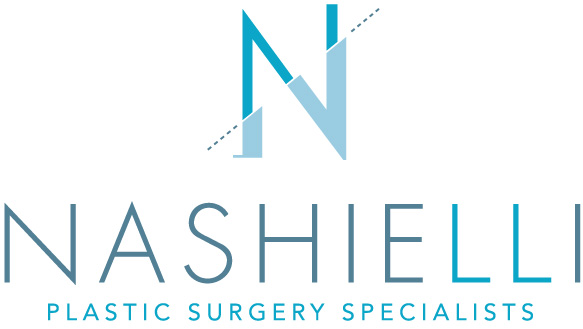TORSOPLASTY (BACK LIFT – TUMMY TUCK CIRCULAR/BACKSCAR)
Have you ever had any bariatric surgery procedure?
If that is the case, the Torsoplasty may be the perfect procedure to give your body back a more harmonic and healthy figure,
getting rid of the excess of skin, fat and muscle flabbiness stored around the abdomen, waist and back.

The body lift or circular tummy tuck or belt is the surgical procedure in order to remove excess skin (redundant) and fat as well as restoring muscle flaccidity. Generally this excess skin, fat and muscle flaccidity is caused by excessive weight loss, either from diet and exercise or after a bariatric type of surgery (gastric bypass, gastric sleeve, gastrectomy or lapband).
As its definition describes, it is used to improve both the anterior abdomen (tummy), combined with the sides (side of the abdomen or waist) and back, thus correcting the excess skin, fat and muscle flaccidity resulting in a more natural appearance, and improving the contours of your body.
This type of surgery has increased dramatically over the past 5 years due to the increasingly large number of patients undergoing bariatric surgery. After such a surgery, it usually takes between one to two years to achieve an optimal weight. Once the weight has stabilized, it is time to proceed with this surgery.
FACE
FAQS
What are the steps to surgery?
Like any surgery, it is very important to evaluate your medical and physical condition through routine preoperative tests as well as have an evaluation by a cardiologist or an internist. This is done to be sure your healthy and can safely undergo surgery with minimal risks.
In the first consultation, we will evaluate in general the condition of your skin, fat deposits and muscle flaccidity in the abdominal area, waist and back. We will explain how much can be removed. We will take photographs to explain the outcome we can achieve.
This surgery is generally indicated in patients who have lost a significant amount of weight which has resulted in excess skin along with muscle flaccidity . This surgery is an extensive procedure, and therefore, it is not recommended to combine with other procedures.
You will be given direction on how to manage these once you have returned to your residence.
How long will my recovery take?
After this surgery, you will stay one night in the hospital. The morning after surgery, you will get up to walk, starting with small steps and slow motion. You will be wearing and required to use a compression garment for several weeks after surgery. You will also have drains, which will be removed within approximately 4-10 days. You will be given direction on how to manage these once you have returned to your hotel.
You will also be using compression stockings on your legs to help with inflammation and edema. After managing to stand, being in a stable conditions, being able to eat some food, you will be discharged from hospital. You will be encouraged to walk as much as possible but you cannot make any strenuous efforts or other exercise during the first 2 to 4 weeks. Gradually, your mobility will improve and it is recommended to walk slightly bent forward for the first 2 weeks. After the first two weeks, you will gradually start to decrease the bending until you are walking upright. After 6-8 weeks, you may return to an exercise routine with the approval of your surgeon, starting slowly to build up your conditioning. During this period, even though you will likely have returned home, we will be monitoring your recovery regularly to make your healing process is progressing as it should.
Immediately after your surgery, you will notice improvement in your body contour but keep in mind you will still see excess volume due to swelling and inflammation. This swelling will decrease progressively and you will see a major improvement after 3 weeks. You will see your final results in 3-4 months and by maintaining a healthy diet and regular exercise, you retain your new shape permanently.
How long will your procedure take and what type of anesthesia used?
In almost all cases, the type of anesthesia used is an epidural block and sedation. Only in those cases in which previous medical conditions require general anesthesia will that be used. Each case is evaluated individually and will be recommended according to the needs of each patient.
The time of surgery is between 4 to 5 hours approximately. But we have to take into account the preparation time prior to surgery, which is about 1 hour and you will also spend 1 to 2 hours in the recovery room before being transferred to your private room.
What will my incisions look like?
The location of the scars will be explained in the initial consultation. This surgery leaves a circular scar around your entire body, at the height of your waist because we are correcting the abdomen, waist, sides and back at the same time. You may imagine it just like a belt and although this scar is long in circumference, it will be hidden by your underwear or bathing suit.
At the beginning, as with any scar, it is very visible. In order to reduce the visibility of the scar, it is very important to follow all the after-care instructions you are given. Part of the result of a good scar, is relative to the surgeon’s experience. But it is also equally important to take care of your scars on a daily basis. It is also advised to avoid sun exposure for a couple of months, and use the healing products that are recommended to you so at the end of the process, you will have a very inconspicuous scar.
What do I have to do before my surgery?
- ONE MONTH BEFORE SURGERY
- ONE WEEK BEFORE SURGERY
- ONE DAY BEFORE SURGERY
- MORNING OF SURGERY
- AFTER YOUR SURGERY
Stop taking medicines such as Aspirin and Vitamin E and any type of homeopathic remedies
If applicable, stop smoking completely.
Do some type of aerobic exercisefor at least 30 minutes 4 times a week.
Attend pre surgical consultation, including taking of photographs.
Complete blood tests and cardiac evaluation.
Receive post-operative indications.
Do not ingest any food or drink after the time advised by your surgeon.
Pack a bag with comfortable shoes and clothing, specifically something that zips or buttons.
Drink additional fluids as directed for hydration
Do not drink alcohol
No painted nails
Shower or bathe normally.
Do not use gel or any other product on the hair.
Do not use makeup, facial creams or body lotions.
You will be given all medical garments and medicine which will include pain medication, anti-inflammatories and antibiotics.
We suggest that someone is with you the first 24 to 48 hours as you may feel weak, sleepy or numb. Your movements should be slow and careful avoiding strenuous effort and walking slightly bent forward at the hip.
You must use a compression garment day and night on your torso as well as compression stockings on the legs. Compression stockings are used for only the first two weeks on the legs. The compression garment is used day and night for 6 to 8 weeks depending on the particular evolution of the case only to be removed for bathing. Each patient is evaluated constantly in postoperative consultations to make sure everything is fine.
It is important to a healthy diet, trying to avoid spicy foods, fatty or spicy foods, in order to avoid irritation of the stomach.
Staying well hydrated is also important and be sure to take the prescribed medications as outlined by your surgeon. You will take antibiotics, analgesics and a anti-inflammatory for a period of 7 to 10 days. Avoid being in very hot or unventilated areas. Avoid direct sun exposure. Be aware of your wounds and how they are healing as any unusual signs or symptoms must be evaluated on a continuous basis. Most patients experience the greatest amount of discomfort within the first 2 weeks.
What are the associated risk factors of liposuction?
Common risk factors are patients over 40 years, prolonged surgery, oral contraceptive use, smoking and obesity. It is also possible to develop vein obstruction in the legs (varicose veins). If you have a chronic, degenerative disease such as diabetes, mellitus or hypertension, it is important it is under control to avoid additional risks. It is very important to assess your health previously and accordingly, to analyze it with your doctor.
Some other risks include infection, hematoma or seroma, necrosis. Other rare risks will be assessed in your pre-surgery consultation.
